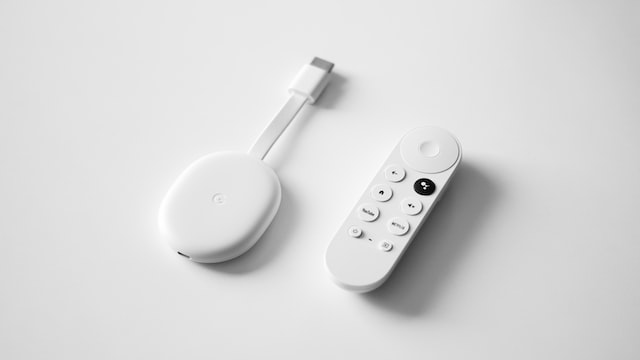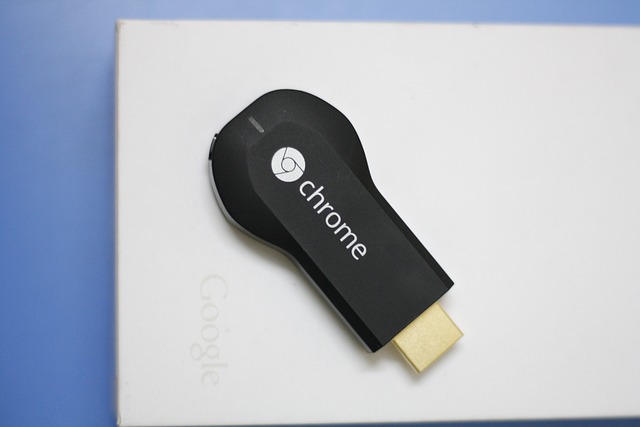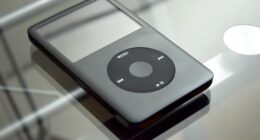The history of cologne and perfumeCasting refers to transmitting content from one device to another, such as streaming video from a smartphone to a TV. Mirroring, on the other hand, involves duplicating the content from one device onto another, so that the second device displays an exact replica of the first device’s screen.
What is casting?
(Photo by Victor Carvalho on Unsplash )

Casting refers to the process of wirelessly transmitting or beaming audio, video, or other multimedia content from a smartphone, tablet, or computer to a TV or other compatible device. This is usually done using a casting-enabled app or device, such as Google Chromecast, Apple AirPlay, or Roku. Casting allows users to enjoy their favorite content on a larger screen or with better audio quality, without the need for cables or additional equipment.
What is mirroring?
Mirroring is when you display the screen of your device on another screen. The most common way to mirror your screen is with a cable that connects your phone or computer to a TV. You can also mirror your screen wirelessly with some devices. When you mirror your screen, anything that appears on your screen will also appear on the other screen. This includes all apps, websites, photos, and videos.
Casting Vs. Mirroring – Key differences
Casting and mirroring are both methods for displaying content from one device to another, but they differ in a few key ways:
- Casting involves streaming content from one device to another, while mirroring involves duplicating the screen of one device on another.
- Casting requires a casting-enabled app or device, while mirroring may be built-in to the device or require third-party software.
- Casting can allow the content to be controlled from the casting device, while mirroring requires the original device to be used for control.
- Casting may allow the content to continue playing on the receiving device even if the casting device is turned off or disconnected, while mirroring requires the devices to remain connected for the content to be displayed.
Overall, casting is a more flexible and efficient way of streaming content, while mirroring is more suited for situations where an exact replica of the screen is required, such as for presentations or remote assistance.
Is casting or mirroring better?
Whether casting or mirroring is better depends on your specific needs and preferences.
Casting is generally more flexible and efficient, as it allows you to stream content from your device to a larger screen or better speakers without using cables or additional hardware. You can also use your device to control the content, and may even be able to use other apps while the content is streaming. However, not all content or devices may be supported by casting, and there may be some latency or quality issues depending on your network connection.
Mirroring, on the other hand, provides an exact replica of your device’s screen on another device, which can be useful for presentations or remote assistance. However, it may require cables or additional hardware, and the performance may be affected by the processing power of the device being mirrored. Additionally, you may not be able to use your device for other purposes while mirroring.
Both casting and mirroring have their advantages and disadvantages, and the best option for you will depend on your specific needs and preferences.
What is screen mirroring used for?
Screen mirroring is the process of displaying the screen of a mobile device, tablet, or computer on another device with a larger screen, such as a TV or a projector. It is a useful feature that can be used for various purposes, such as:
Presentations: Screen mirroring can be used to give presentations, allowing the presenter to display their slides, documents, or videos on a larger screen.
Entertainment: Screen mirroring can be used to enjoy movies, TV shows, or videos from a mobile device on a bigger screen, such as a TV.
Gaming: Screen mirroring can be used to play mobile games on a larger screen, allowing for a more immersive gaming experience.
Remote assistance: Screen mirroring can be used to provide remote assistance, allowing one person to remotely access and control another person’s device.
Education: Screen mirroring can be used in educational settings, allowing teachers to share their screens and demonstrate concepts to students on a larger screen.
Screen mirroring is a versatile feature that can be used for a wide range of applications and is especially useful for situations where a larger display is needed.
What is casting used for?
Casting is the process of wirelessly transmitting or beaming audio, video, or other multimedia content from a smartphone, tablet, or computer to a TV or other compatible device. Casting is used for various purposes, such as:
Streaming video: Casting allows users to stream video from apps like Netflix, YouTube, and Hulu from their mobile devices to a larger screen with better audio quality.
Listening to music: Casting allows users to play music from their phones on a larger speaker or home entertainment system, making it a great option for parties or gatherings.
Sharing photos and videos: Casting allows users to share photos and videos with others on a larger screen, making it a great option for family gatherings or events.
Gaming: Some mobile games can be cast onto a TV, allowing users to play games on a larger screen and with a more immersive experience.
Presentations: Some presentation apps support casting, allowing presenters to cast their slides onto a larger screen for a better viewing experience.
Casting is a useful feature that allows users to enjoy their favorite content on a larger screen with better audio quality, without the need for cables or additional equipment.
The advantages and disadvantages of casting
Casting has a number of advantages and disadvantages that should be considered before deciding to use it. Some of the key advantages and disadvantages of casting include:
Advantages:
- Convenience: Casting is a convenient way to stream content from your mobile device or computer to a larger screen. It allows you to easily access and control your content from your device, without the need for cables or additional equipment.
- Flexibility: Casting is a flexible option that can be used with a wide range of devices and platforms, including iOS, Android, and Google Chrome. This means that you can use casting with a variety of devices and services, including Netflix, YouTube, and Spotify.
- Improved audio and video quality: Casting allows you to stream audio and video to a larger screen, which can improve the quality of the content you are watching or listening to. It can also improve the audio quality by connecting to a better sound system or speakers.
- Multi-tasking: Casting allows you to continue using your device for other tasks while your content is being streamed to a larger screen. This means that you can continue to browse the web, check your emails, or use other apps while your content is playing.
Disadvantages:
- Network connectivity: Casting requires a strong and stable internet connection, as well as a compatible device and network. If you have poor network connectivity or a slow internet connection, the quality of the content may be affected, resulting in buffering or lag.
- Limited device support: Not all devices or platforms support casting, which means that you may not be able to use casting with certain devices or services.
- Latency: There may be some latency or delay between the time you perform an action on your device and when it is reflected on the larger screen. This may be noticeable when playing games or performing other interactive activities.
- Quality issues: Depending on the quality of your internet connection, the image and sound quality may be lower when using casting than when using other methods such as a wired connection.
Casting is a convenient and flexible option for streaming content from your mobile device or computer to a larger screen, but it may have some drawbacks depending on your specific needs and circumstances.
The advantages and disadvantages of mirroring
Mirroring also has a number of advantages and disadvantages that should be considered before deciding to use it. Some of the key advantages and disadvantages of mirroring include:
Advantages:
- Easy setup: Mirroring is generally easy to set up and use, requiring only a few steps to connect your device to the TV or other screen.
- Full screen viewing: Mirroring allows you to view your device’s screen on a larger screen in full screen mode, providing a better viewing experience.
- Multi-tasking: Mirroring allows you to use your device for other tasks while your content is being mirrored on a larger screen. This means that you can continue to use your device as normal while your content is being displayed on the larger screen.
- Compatibility: Mirroring is compatible with a wide range of devices and operating systems, including iOS, Android, Windows, and Mac.
Disadvantages:
- Limited control: Mirroring does not allow you to control your device using the TV or other screen, which means that you will need to use your device to perform any actions or make any changes.
- Battery drain: Mirroring can drain the battery of your device quickly, particularly if you are streaming video or other intensive content.
- Latency: There may be some latency or delay between the time you perform an action on your device and when it is reflected on the larger screen. This may be noticeable when playing games or performing other interactive activities.
- Quality issues: Depending on the quality of your internet connection, the image and sound quality may be lower when using mirroring than when using other methods such as a wired connection.
Mirroring is a convenient and easy-to-use option for viewing your device’s screen on a larger screen, but it may have some limitations depending on your specific needs and circumstances.
Featured Image By – Paul Abraham ( Deepaul ) from Pixabay








